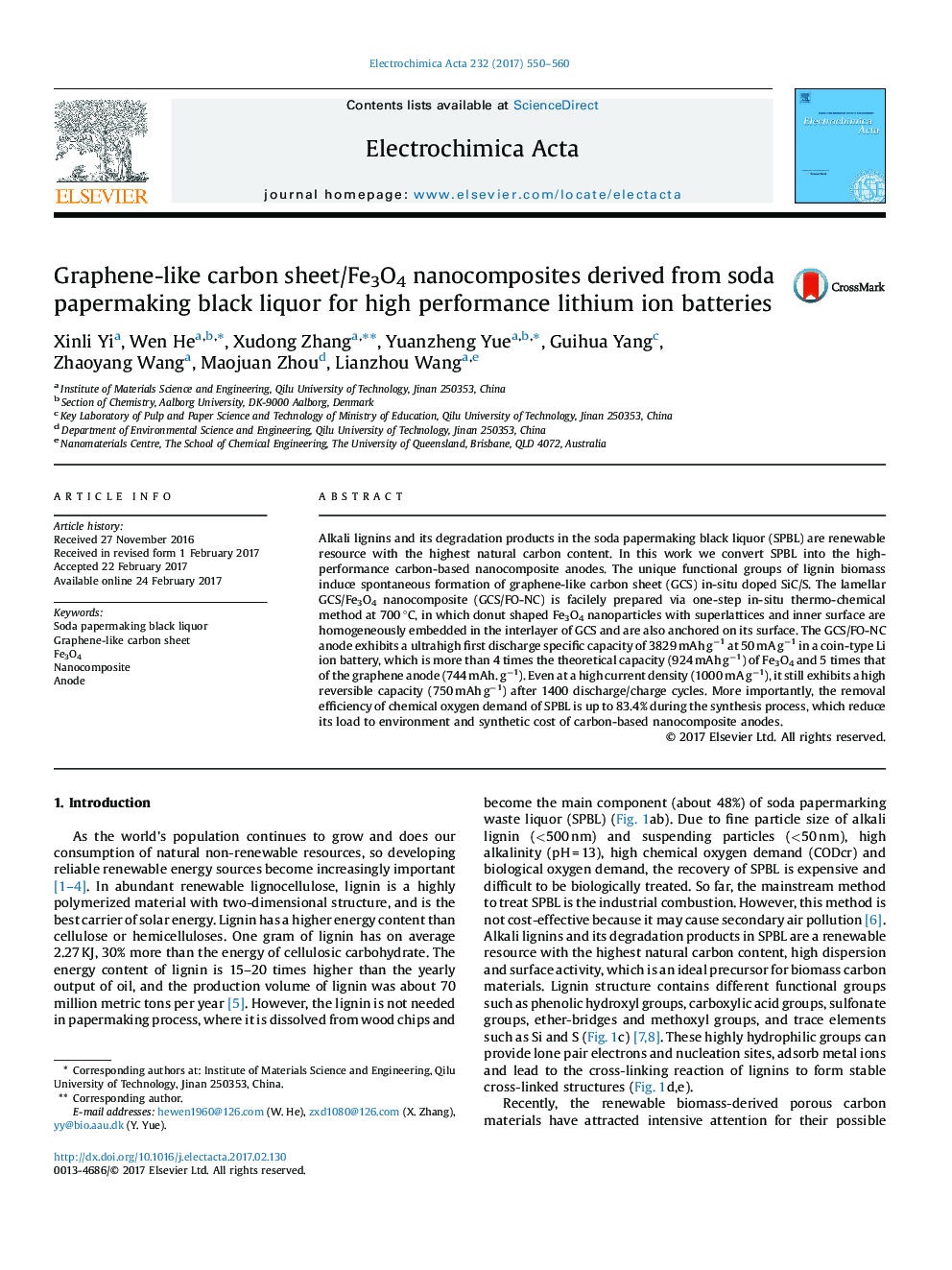| Article ID | Journal | Published Year | Pages | File Type |
|---|---|---|---|---|
| 6471921 | Electrochimica Acta | 2017 | 11 Pages |
â¢Lamellar Si/S-in situ doped graphene/Fe3O4 nanocomposite were prepared from the soda papermaking black liquor.â¢Fe3O4 nanoparticles are homogeneously embedded in the interlayer of the lamellar nanocomposite.â¢A discharge capacity (3829 mAh gâ1) is more than 4 times the theoretical capacity of Fe3O4.â¢A synergy effect at the nanoscale between different electrochemical reactions.
Alkali lignins and its degradation products in the soda papermaking black liquor (SPBL) are renewable resource with the highest natural carbon content. In this work we convert SPBL into the high-performance carbon-based nanocomposite anodes. The unique functional groups of lignin biomass induce spontaneous formation of graphene-like carbon sheet (GCS) in-situ doped SiC/S. The lamellar GCS/Fe3O4 nanocomposite (GCS/FO-NC) is facilely prepared via one-step in-situ thermo-chemical method at 700 °C, in which donut shaped Fe3O4 nanoparticles with superlattices and inner surface are homogeneously embedded in the interlayer of GCS and are also anchored on its surface. The GCS/FO-NC anode exhibits a ultrahigh first discharge specific capacity of 3829 mAh gâ1 at 50 mA gâ1 in a coin-type Li ion battery, which is more than 4 times the theoretical capacity (924 mAh gâ1) of Fe3O4 and 5 times that of the graphene anode (744 mAh. gâ1). Even at a high current density (1000 mA gâ1), it still exhibits a high reversible capacity (750 mAh gâ1) after 1400 discharge/charge cycles. More importantly, the removal efficiency of chemical oxygen demand of SPBL is up to 83.4% during the synthesis process, which reduce its load to environment and synthetic cost of carbon-based nanocomposite anodes.
Graphical abstractDownload high-res image (214KB)Download full-size image
